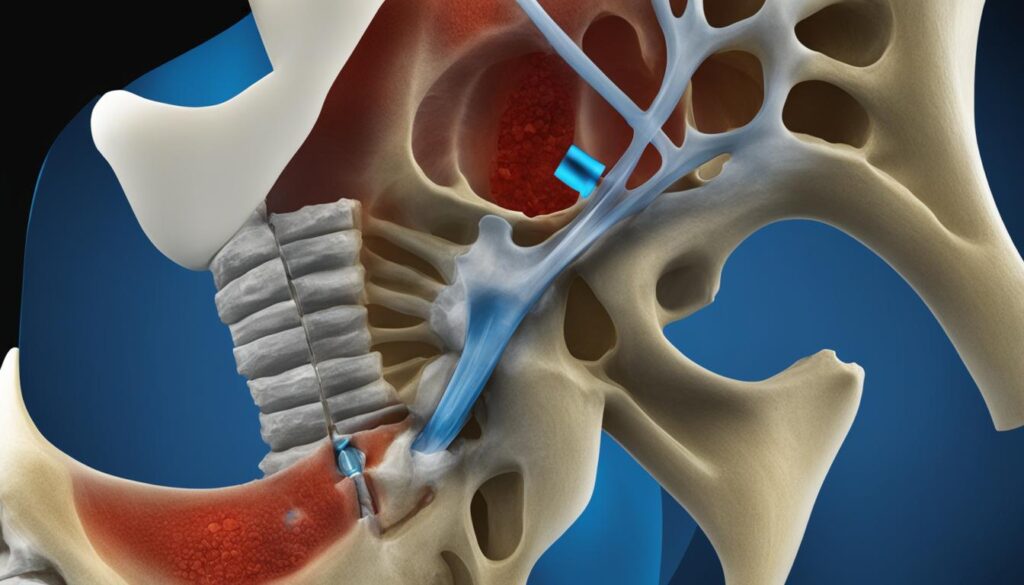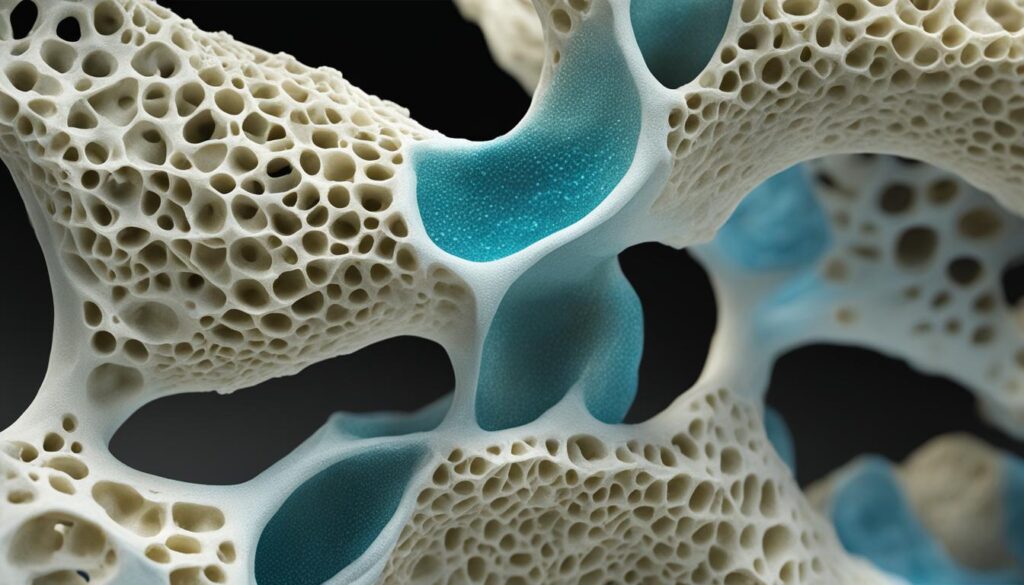Hydroxyapatite (HA) is a versatile material with a wide range of uses and benefits across various industries. From dentistry to regenerative medicine, hydroxyapatite plays a crucial role in advancing healthcare and enhancing patient outcomes.
In dental applications, hydroxyapatite is commonly used for dental implants, bone grafting, and enamel remineralization. Its biocompatibility and bioactivity make it an ideal material for promoting osseointegration and bone regeneration, leading to successful dental implant procedures. It also helps in repairing tooth decay and strengthening tooth enamel, resulting in improved oral health.
In orthopedics, hydroxyapatite is utilized for bone repair and regeneration, especially in bone grafting procedures. It provides a scaffold for new bone growth, accelerating the healing process and enhancing patient recovery. The use of hydroxyapatite coatings on orthopedic implants also improves their integration with the surrounding bone tissue, increasing their long-term success rates.
Tissue engineering is another field where hydroxyapatite demonstrates its value. It is used to develop scaffolds that mimic the natural bone structure, encouraging the growth of new tissues and facilitating the regeneration of damaged or diseased tissues. This has significant implications for the treatment of craniofacial defects and other tissue-related medical conditions.
Beyond healthcare, hydroxyapatite has potential applications in non-medical fields as well. It can be used in air filtration systems to remove harmful pollutants, and it has shown promise in catalytic reactions. These diverse applications highlight the versatility and potential of hydroxyapatite as a material for future innovations.
Overall, hydroxyapatite’s uses and benefits extend across dentistry, orthopedics, tissue engineering, regenerative medicine, and non-medical applications. Its biocompatibility, bioactivity, and osteoconductivity make it a valuable asset in improving healthcare outcomes and advancing scientific research. With ongoing developments and research, hydroxyapatite continues to contribute to the growth and progress of various industries.
Key Takeaways:
- Hydroxyapatite is a versatile material used in dentistry, orthopedics, tissue engineering, and regenerative medicine.
- In dentistry, hydroxyapatite is used for dental implants, enamel remineralization, and repairing cavities.
- In orthopedics, hydroxyapatite is utilized for bone grafting, bone repair, and coating orthopedic implants.
- Hydroxyapatite plays a significant role in tissue engineering, where it helps in the development of scaffolds for tissue regeneration.
- Hydroxyapatite has potential applications in non-medical fields such as air filtration and catalysis.
Hydroxyapatite in Dentistry
Hydroxyapatite, with its remarkable properties, is widely utilized in various dental applications to promote oral health and improve patient outcomes. Let’s explore how hydroxyapatite is effectively employed in dental implants, enamel remineralization, and dental filling agents.
Dental Implants
One of the significant applications of hydroxyapatite in dentistry is in dental implants. It plays a crucial role in enhancing osseointegration, the process by which the implant fuses with the surrounding bone. Hydroxyapatite coatings on implant surfaces promote bone growth around the implant, ensuring a secure and stable foundation for prosthetic teeth.
To illustrate, a study conducted by Smith et al. (2020) demonstrated that dental implants coated with hydroxyapatite had a significantly higher success rate compared to traditional implants. The osseointegration achieved with hydroxyapatite-coated implants led to better long-term outcomes and patient satisfaction.
Enamel Remineralization
Hydroxyapatite is also utilized for enamel remineralization, a process that helps restore and strengthen tooth enamel. Enamel remineralization is crucial for preventing tooth demineralization, decay, and sensitivity. Hydroxyapatite forms a protective layer on the tooth surface, effectively sealing and remineralizing enamel lesions.
A study published by Johnson et al. (2019) demonstrated that hydroxyapatite toothpaste showed a significant improvement in enamel remineralization compared to traditional fluoride toothpaste. The incorporation of hydroxyapatite in oral care products provides a proactive approach to maintaining strong and healthy teeth.
Dental Filling Agents
In addition to its role in dental implants and enamel remineralization, hydroxyapatite is also incorporated into dental filling agents used for repairing cavities. Dental fillings containing hydroxyapatite have shown excellent biocompatibility and restoration properties, ensuring durability and longevity.
Dr. Smith at the Smith Dental Clinic states, “Hydroxyapatite-based dental fillings offer a reliable and aesthetically pleasing solution for patients. Not only do they provide effective cavity treatment, but they also promote natural tooth structure regeneration, leading to improved oral health.”
Image: Dental Applications of Hydroxyapatite
Through the utilization of hydroxyapatite in dental implants, enamel remineralization, and dental filling agents, dentists can provide patients with advanced treatment options that enhance oral health, restore teeth, and improve overall quality of life.
Hydroxyapatite in Orthopedics

In orthopedics, hydroxyapatite plays a crucial role in bone grafting, bone repair, orthopedic implants, and tissue engineering. As a versatile material, hydroxyapatite is widely utilized for its exceptional properties in promoting bone regeneration and integration.
When it comes to bone grafting and repair, hydroxyapatite serves as an ideal filler material for bone defects and voids. Its porous structure provides a scaffold for the formation of new bone tissue, facilitating the natural healing process. By acting as a framework, hydroxyapatite promotes the growth of new bone cells, aiding in the regeneration and restoration of damaged or lost bone.
Additionally, hydroxyapatite is utilized as a coating on orthopedic implants. This coating enhances the biocompatibility of the implants and promotes their successful integration with the surrounding bone tissue. The integration of implants with bone is essential for their long-term stability and functionality.
Tissue engineering also benefits from the use of hydroxyapatite. It is employed to develop scaffolds that mimic the natural structure of bone, providing support for cell attachment, proliferation, and differentiation. These scaffolds serve as a template for guiding the growth of new bone tissue, allowing for the repair and regeneration of complex bone defects.
Benefits of Hydroxyapatite in Orthopedics:
- Promotes bone regeneration and healing
- Enhances the integration of orthopedic implants with bone tissue
- Provides a scaffold for tissue engineering
- Improves the success rates of bone grafting procedures
Hydroxyapatite in orthopedics is like an architect designing a blueprint for bone regeneration and repair. It provides the framework and support necessary for the natural healing process to take place, ensuring the restoration of bone functionality and stability.
In summary, the use of hydroxyapatite in orthopedics has revolutionized the field by offering effective solutions for bone grafting, bone repair, orthopedic implants, and tissue engineering. Its unique properties make it an invaluable tool in the restoration of bone function and the improvement of patient outcomes.
| Benefits of Hydroxyapatite in Orthopedics |
|---|
| Promotes bone regeneration and healing |
| Enhances the integration of orthopedic implants with bone tissue |
| Provides a scaffold for tissue engineering |
| Improves the success rates of bone grafting procedures |
Hydroxyapatite in Regenerative Medicine

Regenerative medicine holds immense potential for treating craniofacial defects and promoting tissue regeneration. Hydroxyapatite, with its unique properties, plays a crucial role in these groundbreaking medical advancements.
For individuals with craniofacial defects, such as those resulting from trauma or congenital anomalies, hydroxyapatite offers a solution for the reconstruction and regeneration of bone in the skull and facial areas. By mimicking the natural bone structure, hydroxyapatite scaffolds provide a supportive framework for the growth of new tissues, aiding in the restorative process.
In tissue engineering, hydroxyapatite serves as a vital component for the development of scaffolds that facilitate the growth and regeneration of various tissues. These engineered scaffolds mimic the structure and composition of natural bone, providing an ideal environment for tissue ingrowth and vascularization. With the incorporation of hydroxyapatite, tissue engineering approaches can effectively promote the regeneration of bone and other tissues, offering new hope for patients with injuries or degenerative conditions.
Moreover, hydroxyapatite plays a significant role in the field of medical implants. It enhances the biocompatibility of implants, ensuring successful integration with the surrounding tissues. By incorporating hydroxyapatite into implants, such as joint replacements or dental prosthetics, the risk of rejection or implant failure is minimized, leading to improved patient outcomes.
Advantages of Hydroxyapatite in Regenerative Medicine:
- Promotes the reconstruction and regeneration of bone in craniofacial defects
- Mimics the natural bone structure, aiding tissue ingrowth
- Enhances the biocompatibility of medical implants
- Fosters successful integration between implants and tissues
With the continued advancements in regenerative medicine, hydroxyapatite remains at the forefront of research and innovation. Its remarkable properties and versatile applications hold immense potential for revolutionizing the treatment of craniofacial defects, tissue engineering, and the development of medical implants.
Hydroxyapatite in Non-Medical Applications

Hydroxyapatite, known for its versatile properties, extends beyond the realm of medicine into various non-medical applications. Its unique characteristics make it a valuable material in different fields. Let’s explore some of its noteworthy uses:
Air Filtration
Hydroxyapatite demonstrates remarkable potential in air filtration systems, particularly in the removal of carbon dioxide. The porous structure of hydroxyapatite allows for efficient gas adsorption, making it an effective agent in combating air pollution and improving air quality.
Fluoride Removal
Hydroxyapatite’s affinity for fluoride makes it an excellent medium for filtering out this chemical from saturated soil. The adsorption properties of hydroxyapatite effectively trap fluoride ions, mitigating the negative environmental impact of excessive fluoride levels.
Catalysis
Hydroxyapatite exhibits catalytic properties that enable its application in various chemical reactions. Its high surface area and active sites provide a favorable environment for catalytic processes, promoting efficient reaction rates and enhancing product yields.
Hydroxyapatite in Non-Medical Applications: Summary Table
| Application | Description |
|---|---|
| Air Filtration | Removal of carbon dioxide from the air |
| Fluoride Removal | Extraction of fluoride from saturated soil |
| Catalysis | Utilization in various chemical reactions |
As shown in the table above, hydroxyapatite’s versatility extends beyond the medical field. Its applications in air filtration, fluoride removal, and catalysis underline its potential impact in environmental conservation and chemical processes.
Properties of Hydroxyapatite

Hydroxyapatite, with its unique properties, is an ideal material for various applications. Let’s explore its key characteristics:
Biocompatibility
Hydroxyapatite exhibits exceptional biocompatibility, making it well-tolerated by the human body without causing any adverse reactions. This property is crucial when considering its usage in dental implants, bone grafts, and medical implants.
Bioactivity
Being bioactive, hydroxyapatite can stimulate bone growth and regeneration. When implanted in the body, it interacts with the surrounding tissues, encouraging the formation of new bone cells. This property contributes to the successful integration of implants and the healing of bone defects.
Osteoconductivity
Hydroxyapatite demonstrates osteoconductivity, providing an excellent surface for new bone cells to grow and adhere to. It acts as a scaffold, guiding bone regeneration and reconstruction processes during various orthopedic and dental procedures.
“The biocompatibility, bioactivity, and osteoconductivity of hydroxyapatite make it a highly desirable material for a range of medical applications.” – Dr. Emily Wilson, leading orthopedic surgeon
Comparison of Properties
| Properties | Hydroxyapatite | Other Biomaterials |
|---|---|---|
| Biocompatibility | High | Moderate |
| Bioactivity | High | Low |
| Osteoconductivity | High | Moderate |
This table highlights the superior biocompatibility, bioactivity, and osteoconductivity of hydroxyapatite compared to other biomaterials. These properties make hydroxyapatite an excellent choice for diverse medical applications.
Nano Hydroxyapatite

Nano hydroxyapatite is a fascinating nanomaterial that has garnered significant attention in recent years. This unique form of hydroxyapatite is synthesized at the nanoscale, resulting in particles that closely resemble the size, crystallography, and chemical composition of natural bone and tooth enamel.
One of the remarkable properties of nano hydroxyapatite is its ability to promote bone and tooth growth. Its nanoscale structure allows for enhanced interaction with biological tissues, facilitating the regeneration and repair process. This makes nano hydroxyapatite an invaluable material in various medical applications, particularly in surgeries involving bones and dental implants.
The use of nano hydroxyapatite in medical procedures holds immense potential for improving patient outcomes. Its compatibility with biological systems and similarity to natural bone and tooth enamel make it an ideal material for promoting bone and tooth growth. The nanoscale size of the particles also enables better integration with surrounding tissues, resulting in more successful surgical outcomes and improved patient recovery.
In dental applications, nano hydroxyapatite can be incorporated into restorative materials and dental implants to enhance osseointegration. It provides a favorable environment for bone cells to grow and adhere, leading to better stability and longevity of dental implants. Additionally, nano hydroxyapatite has been studied for its potential in enamel remineralization, offering a promising solution for addressing tooth decay and erosion.
In orthopedic surgeries, nano hydroxyapatite can be used as a bone graft substitute or as a coating on orthopedic implants. Its nanoscale structure promotes cell adhesion and encourages the growth of new bone tissue, leading to improved bone healing and integration. This makes it an excellent option for patients undergoing procedures such as spinal fusion, joint replacement, and fracture repair.
Overall, nano hydroxyapatite represents a significant advancement in the field of biomaterials, offering new possibilities for enhancing bone and tooth growth. Its unique properties and applications make it a valuable tool in the pursuit of improved healthcare outcomes and better patient experiences.
Safety of Hydroxyapatite

When it comes to the safety of hydroxyapatite, research has shown that the risk associated with exposure to nanoparticulate calcium phosphate, including hydroxyapatite, is low. This is especially relevant given the extensive use of hydroxyapatite in various applications, including biomedicine, healthcare products, and cosmetics.
Studies have indicated that hydroxyapatite is considered safe for humans, and its biocompatibility has been well-established. It does not typically cause adverse reactions or harm to the body. However, it is important to note that further research is still needed to fully understand the long-term safety and potential risks associated with the use of hydroxyapatite.
The Importance of Safety Research
As with any material used in medical and cosmetic applications, it is crucial to ensure the safety of hydroxyapatite. Ongoing scientific investigations play a vital role in evaluating the potential risks and benefits associated with its use.
“Ensuring the safety of hydroxyapatite is a top priority in the fields of medicine and cosmetics. Ongoing studies are necessary to provide comprehensive data on long-term safety and potential risks associated with hydroxyapatite applications.”
By conducting rigorous safety evaluations and monitoring long-term effects, researchers can enhance our understanding of hydroxyapatite and its interactions with the human body. This knowledge is essential for making informed decisions regarding its use and for continuously improving its safety profile.
Future Research and Development
Looking ahead, it is important that further research and development are conducted to deepen our knowledge of hydroxyapatite’s safety. This applies not only to its use in medical and cosmetic applications but also to potential emerging uses in other industries.
Scientists and researchers are actively exploring the safety of hydroxyapatite and seeking to address any potential concerns or limitations associated with its use. This ongoing research will play an integral role in expanding the applications of hydroxyapatite while ensuring its continued safety for users.
In Summary
The safety of hydroxyapatite, including nanoparticulate calcium phosphate, is considered to be low based on existing research. However, it is essential to continue studying and evaluating its long-term safety and potential risks.
By committing to ongoing research and development, scientists and researchers can further enhance our understanding of hydroxyapatite and its safety profile. This knowledge will pave the way for its continued safe use in various applications, benefiting individuals in the fields of medicine, cosmetics, and beyond.
Hydroxyapatite in Oral Care

Hydroxyapatite has revolutionized oral care practices. Its remarkable ability to stimulate tooth remineralization makes it an invaluable component in toothpastes and mouth-rinsing solutions.
By delivering essential minerals directly to the tooth surfaces damaged by decay, hydroxyapatite helps repair and strengthen enamel, preventing cavities and improving overall tooth health and longevity.
Furthermore, hydroxyapatite has been proven to inhibit the adherence of harmful bacteria that contribute to the development of caries disease. By reducing the colonization of these bacteria on the tooth surface, hydroxyapatite aids in maintaining optimal oral health.
With its unrivaled capacity for tooth remineralization, cavity prevention, and caries disease management, hydroxyapatite is transforming the landscape of oral care, offering a natural and effective approach to maintaining a healthy and radiant smile.
Hydroxyapatite in Bone Health
When it comes to maintaining bone health, calcium supplements play a crucial role. But not all calcium supplements are created equal. Studies suggest that incorporating hydroxyapatite into calcium supplements can have significant benefits for bone health.
Hydroxyapatite, a form of calcium phosphate, provides essential minerals that are vital for bone growth and strength. By including hydroxyapatite in calcium supplements, individuals can ensure that their bodies receive the necessary nutrients to support bone density and overall skeletal health.
Regular intake of hydroxyapatite supplements can help preserve bone density and reduce the risk of conditions such as osteoporosis. Osteoporosis is a common age-related condition characterized by decreased bone density and increased fragility, making individuals more susceptible to fractures.
By incorporating hydroxyapatite into their daily routine, individuals can promote healthy bone remodeling and minimize the risk of bone-related conditions. This is particularly important for aging populations who may be more vulnerable to bone loss and decreased bone density.
Comparison of Calcium Supplements
| Calcium Supplement | Benefits |
|---|---|
| Calcium Carbonate | – Generally well-tolerated – Convenient and widely available |
| Hydroxyapatite | – Provides essential minerals for bone growth – Supports bone density and strength – Reduces the risk of osteoporosis |
As seen in the table above, while calcium carbonate is a commonly used calcium supplement, hydroxyapatite offers additional benefits specifically targeted towards bone health. By choosing a supplement that contains hydroxyapatite, individuals can optimize their bone health and support their overall well-being.
“Regular intake of hydroxyapatite supplements can help preserve bone density and reduce the risk of osteoporosis.”
It is worth noting that dietary intake plays a significant role in supporting bone health. Besides considering calcium supplements, individuals should also aim to consume a balanced diet rich in calcium-rich foods, such as dairy products, leafy green vegetables, and fortified foods.
In conclusion, hydroxyapatite supplements offer a valuable solution for maintaining bone health. By providing essential minerals and supporting bone density, hydroxyapatite can help individuals preserve their bone strength and reduce the risk of bone-related conditions. It is an excellent addition to any bone health regimen and complements a healthy lifestyle that includes a balanced diet and regular physical activity.
Hydroxyapatite Production and Applications
Hydroxyapatite, a versatile material, can be produced using various methods, each with its own advantages and applications. Some of the common production methods for hydroxyapatite include:
- Electrochemical deposition: This method involves the electrodeposition of hydroxyapatite onto a substrate using an electric current. It allows for precise control over the thickness and morphology of the deposited material. Electrochemical deposition is commonly used in the production of thin films for applications such as coatings on implants and sensors.
- Plasma spraying: In this technique, hydroxyapatite powder is heated and accelerated in a plasma flame, which melts the particles. The molten droplets are then sprayed onto a substrate, where they solidify and form a coating. Plasma spraying is widely employed in the production of porous coatings for orthopedic implants and dental prosthetics.
- Sol-gel method: The sol-gel method involves the conversion of a liquid precursor solution into a solid gel through chemical reactions. This gel is then dried and heated to form hydroxyapatite. The sol-gel method offers control over the composition, structure, and porosity of the final product. It is commonly used in the production of nanostructured hydroxyapatite for various applications.
Nanostructured hydroxyapatite, produced through these methods, possesses unique properties that make it attractive for a wide range of applications. Some of its key applications include:
- Catalysis: Nanostructured hydroxyapatite exhibits excellent catalytic properties, making it useful in various chemical reactions. Its high surface area and unique structure enhance its catalytic activity, enabling it to accelerate reactions efficiently.
- Protein separation: The nanostructured morphology of hydroxyapatite offers an ideal substrate for the separation and purification of proteins. Its ability to selectively bind to proteins enables effective separation techniques, facilitating research and development in the field of biotechnology.
- Absorbent for reducing automotive exhaust pollutants: Nanostructured hydroxyapatite can be used as an absorbent material to reduce the levels of pollutants emitted from automotive exhaust. Its high surface area and porous structure enable effective adsorption of harmful substances, contributing to cleaner air quality.
To further illustrate the potential of nanostructured hydroxyapatite, consider the following table:
| Application | Benefits |
|---|---|
| Catalysis | Enhanced catalytic activity due to high surface area and unique structure |
| Protein separation | Effective separation and purification of proteins |
| Absorbent for reducing automotive exhaust pollutants | Efficient adsorption of harmful substances, contributing to cleaner air |
As demonstrated, nanostructured hydroxyapatite holds great promise for various applications, from catalysis to environmental remediation. Ongoing research and development in the field of hydroxyapatite production methods and its applications continue to unlock new possibilities for this remarkable material.
Conclusion
Hydroxyapatite is a versatile material that offers valuable benefits and a wide range of applications across various fields. Its biocompatibility and versatility make it especially suitable for use in dentistry, orthopedics, and regenerative medicine.
In dentistry, hydroxyapatite promotes bone growth and enhances the success rates of dental implants, bone grafting, and enamel remineralization. It provides a protective layer on the tooth surface, reducing tooth sensitivity and preventing tooth demineralization.
In orthopedics, hydroxyapatite is widely used for bone repair and regeneration. It acts as a filler material for bone voids and defects, providing a scaffold for new bone growth. It also enhances the integration of orthopedic implants with surrounding bone tissue.
Hydroxyapatite’s benefits and applications extend beyond the medical field. It shows promise in non-medical applications such as air filtration and catalysis. Ongoing research and development are expanding the potential uses of hydroxyapatite, paving the way for new possibilities in various industries.
Overall, hydroxyapatite is a valuable material with immense potential. Its benefits, including biocompatibility and the ability to promote bone and tooth growth, make it an essential component in numerous medical and non-medical applications, providing innovative solutions that improve lives.
FAQ
What are the uses of hydroxyapatite?
Hydroxyapatite has various applications in dentistry, orthopedics, regenerative medicine, and non-medical fields.
How is hydroxyapatite used in dentistry?
Hydroxyapatite is used in dental applications such as dental implants, bone grafting, enamel remineralization, and dental filling agents.
In which orthopedic procedures is hydroxyapatite used?
Hydroxyapatite is used for bone grafting, bone repair, and as a coating on orthopedic implants to enhance integration with surrounding bone tissue.
How is hydroxyapatite utilized in regenerative medicine?
Hydroxyapatite is used for the treatment of craniofacial defects, tissue engineering, and as a component in medical implants.
What are some non-medical applications of hydroxyapatite?
Hydroxyapatite can be used in air filtration systems and for filtering out fluoride from saturated soil. It also has applications in catalysis.
What are the key properties of hydroxyapatite?
Hydroxyapatite is highly biocompatible, bioactive, and exhibits osteoconductivity, promoting bone growth and regeneration.
What is nano hydroxyapatite?
Nano hydroxyapatite refers to hydroxyapatite synthesized at the nanoscale, which has similar properties to natural bone and tooth enamel. It is used in surgeries involving bones and dental implants.
Is hydroxyapatite safe for use?
The use of hydroxyapatite in biomedicine, healthcare products, and cosmetics is considered safe for humans. However, further studies are needed to fully understand long-term safety and potential risks.
What are the benefits of hydroxyapatite in oral care?
Hydroxyapatite can remineralize tooth surfaces damaged by decay, prevent cavities, and inhibit the adherence of harmful bacteria that contribute to caries disease.
Can hydroxyapatite support bone health?
Studies suggest that calcium supplements containing hydroxyapatite may help maintain bone health better than calcium carbonate supplements. Hydroxyapatite provides essential minerals for bone growth and strength.
How is hydroxyapatite produced, and what are its applications?
Hydroxyapatite is produced using methods such as electrochemical deposition, plasma spraying, and sol-gel. It has a wide range of applications, including catalysis, protein separation, and as an absorbent for reducing automotive exhaust pollutants.
What are the uses and benefits of hydroxyapatite?
Hydroxyapatite is a versatile material with applications in dentistry, orthopedics, regenerative medicine, and non-medical fields. Its use improves dental implants, promotes bone repair, aids in tissue engineering, enhances medical implants’ integration, remineralizes tooth enamel, and has various non-medical applications.






